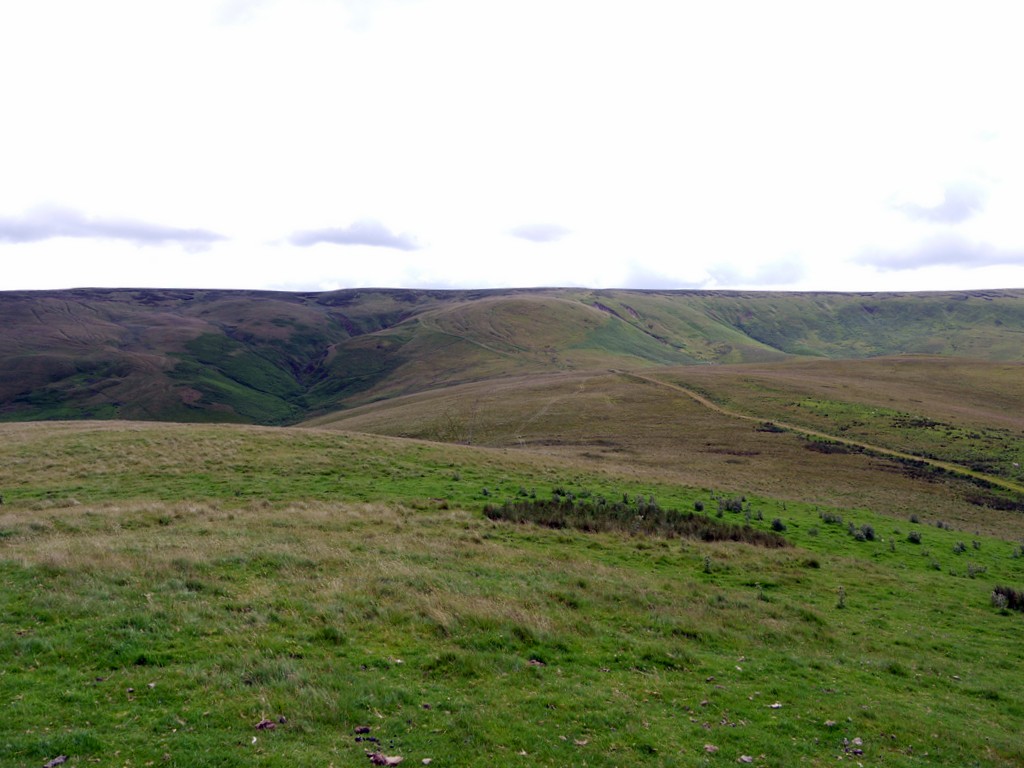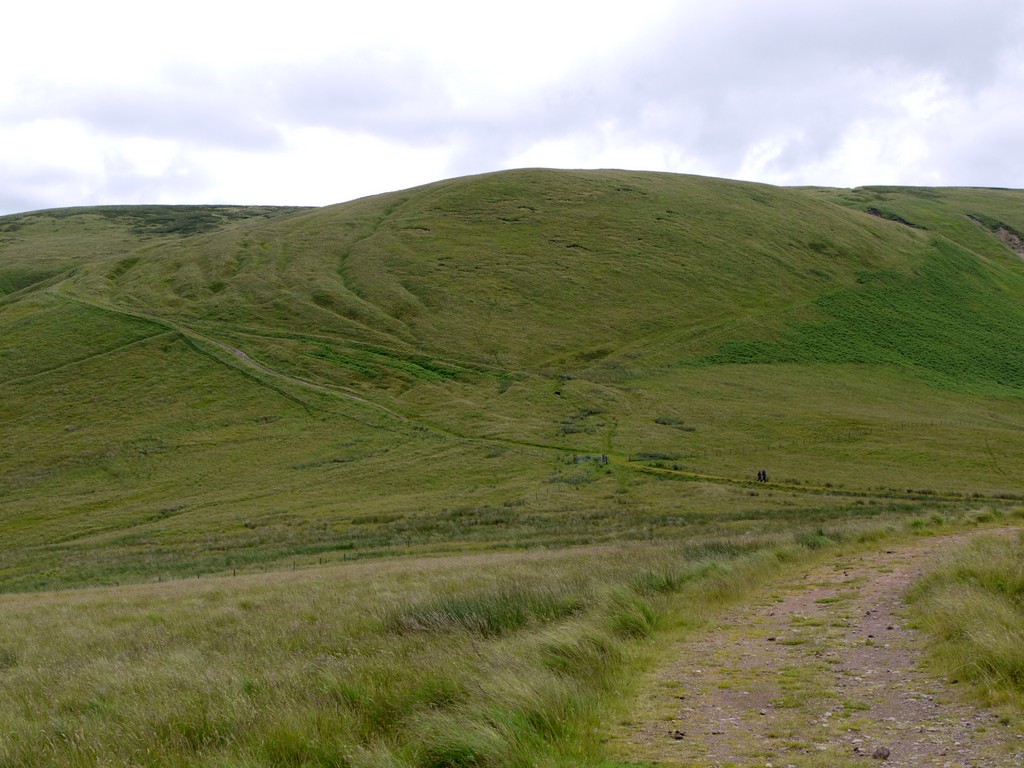A recent visit sparked a little interest in the old cross-Border roads. I thought I had a reasonable idea where these ancient Border-crossing routes went, but an observation during a walk on the Scottish side of Clennell Street suggested things aren't so clear cut as I had thought.
The route which climbs the ridge of Cock Law above the farms of Cocklawfoot and Kelsocleugh arrives at a gate on the Border fence about 2km north-east of Windy Gyle. Here it crosses the Pennine Way footpath and splits into three main branches. One of these is known, at least on the English side, as Clennell Street, and crosses south-easterly through the Cheviot Hills to Alwinton on the River Coquet. Other branches take a more southerly route and join the Coquet valley much further to the west, at Barrowburn.
I was of course aware of the even more westerly cross-Border tracks, crossing at the dizzy height of Windy Gyle itself, and others further west, including The Street and Gamel's Path on the route of the Roman Road, Dere Street, crossing near Coquet Head.
View Cross Border roads in a larger map
Over to the left, visible both in the panorama and the left hand photo, to the east of the deep valley of Hexmoor Cleugh, there is another, even more extensive, series of similar parallel tracks ascending the hillside. It looks very much, as if substantial traffic used to take this more easterly course, now unused by the modern routes, and more or less invisible at the level of the Border ridge. A brief search of that excellent Scottish archaeological resource, the Royal Commission on the Ancient and Historic Monuments of Scotland (RCAHMS) provides a few more clues. The Canmore Mapping resource, in particular, allows access to a huge amount of information. The braided old roads of Outer Cock Law are described here as are a few linear earthworks of the kind I knew as 'cross-dykes'. When these were actually made doesn't seem to be known; they could be medieval constructions or much earlier, possibly even extending back to prehistoric times.
These are found in the vicinity of the old cross Border routes on both the Scottish and Northumberland sides. They were often built to cut off ridges between steep valleys, but with gaps through which the old roads appear to have been constrained. They have been interpreted as both ditches to act as land boundaries or as the means to control or even tax transport along the the roads, either for droves of cattle or individuals. I had observed similar cross-dykes during my climb on the Scottish side of Clennell Street.
Although Canmore fails to record the extensive braided hollow-ways I had observed east of Hexmoor Sike, here too there are linear earthworks of the cross-dyke sort, which appear to confirm it as an ancient routeway. For instance, there is one east of White Knowe at the south end of Fundhope Rig which takes the old track branching east from the Camp Tops ridge from the cross-dyke gap below White Knowe. This track would have crossed Hexmoor Sike near its junction with Thief's Slack.
Futher up the slope where the many hollow-ways of the eastern route become clear, there is another of these linear earthworks.
Where did this eastern route cross the Border and what can be seen there today?
Although slightly lower than the modern Clennell Street crossing shown above, it is an exposed site. The high Cheviot plateau looms to the north, often windy and cloud covered, grim in winter. Recent forest plantation on the Northumberland side flank both side the valley of the Usway Burn. No routes cross the Border here today,.and there is little visible on the English side, although a wide ride though the forest down to the Usway has been left alongside Buttroads Sike. On the Scottish side a place name. Randy's Gap, may refer to the ridge between two unnamed streams, or is perhaps a memory of a crossing point. The line of the route would take a more northerly line over the Usway to join Salter's Road, another ancient route descending to the valley of the River Breammish at Bleakhope, crossing the Cheviots in a straight south-easterly direction to Alnham.
I had always assumed that the Salter's Road route crossed the Usway near Davidson's Linn and joined Clennell Street just south of its Border crossing, as the line of its right of way does today.
In 1829, the Butt Road route was described as a "miserable track impassible in winter", and as being "frequented by smugglers and vagabonds of every description".
The Anglo-Scottish Border Roads of The Cheviot Hills - An historical and archaeological background from Northumberland National Park website.
Droving in Northumberland National Park - An historical and archaeological background from Northumberland National Park website.











 RSS Feed
RSS Feed
